
- Source: Hyperallergic
- Author: John Yau
- Date: May 14, 2017
- Format: DIGITAL
A Celebration of the Rat Bastards:
Joan Brown, Bruce Conner, Jean Conner, Jay DeFeo, George Herms, Wally Hedrick, and Others
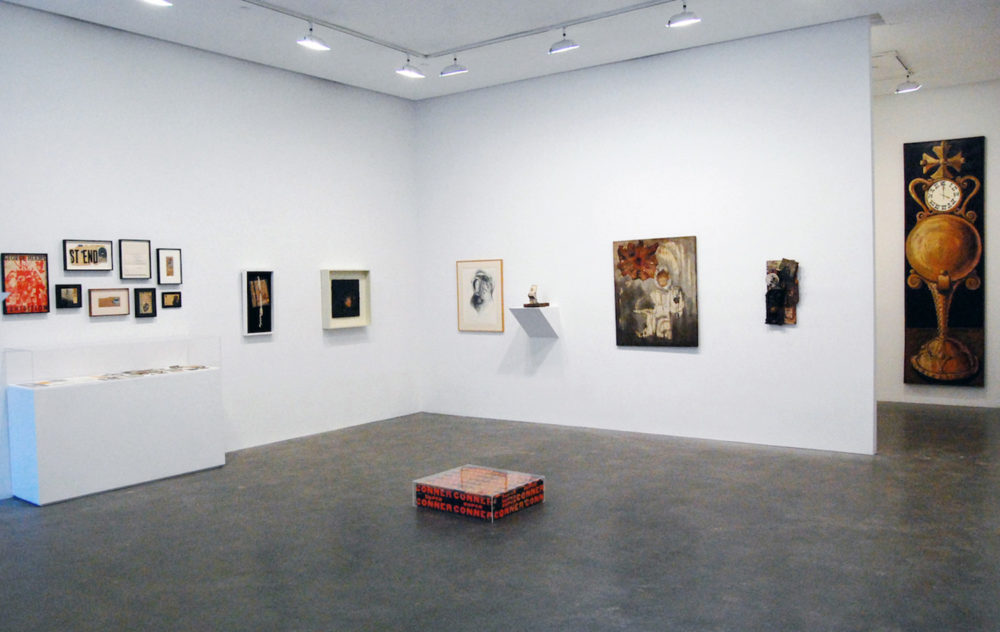
Installation view of “RAT BASTARD PROTECTIVE ASSOCIATION” (2017), Susan Inglett, New York (all images courtesy Susan Inglett gallery)
For many years, Bruce Conner’s film THE WHITE ROSE (1967) was all we knew of Jay DeFeo’s painting “The Rose” (1958-66). Conner made the film on November 9, 1965, when Bekins Moving & Storage Company forklifted the painting out of her second story apartment and studio at 2322 Fillmore Street, San Francisco. By the next day, all the inhabitants of that building, which another resident, Michael McClure, had dubbed “Painterland,” had moved out.
In her book, WELCOME TO PAINTERLAND: Bruce Conner and the Rat Bastard Protective Association (University of California Press, 2016), Anastasia Aukeman has written eloquently and thoroughly about the milieu in which this iconoclastic group of artists, poets, musicians, and publishers thrived from 1957 — when Conner and wife, Jean Sandsted, arrived in San Francisco from Lincoln, Nebraska — to the day “The Rose” was removed from DeFeo’s apartment.
Shortly after coming to San Francisco, Conner formed what he christened the “Rat Bastard Society.” According to Aukeman, Conner derived the name from “a San Francisco trash collectors’ organization, the Scavenger’s Protective Association [combined] with a slur picked up at the gym.” As Aukeman further details in her marvelous book, in 1983, Conner told the curator Peter Boswell that the name was fitting for “people who were making things with the detritus of society, who themselves were ostracized or alienated from full involvement with society.”
If we step back and think about what was going on in New York between 1957 and ’67, particularly as it was documented by the exhibition Inventing Downtown: Artist-Run Galleries in New York City, 1952-1965 at the Grey Art Gallery, New York University (January 10–April 1, 2017), which was curated by the brilliant Melissa Rachleff, we are apt to see a number of parallels – among them a keen interest in assemblage and collage.
According to Thomas B. Hess, the whole New York scene during this time changed for a number of artists, who were suddenly on the outs:
[…] when it seemed, as if on a Monday, they were respected members of a cultural milieu and then, the next Friday, practically the whole art Establishment crossed the street to avoid having to say hello.
Among the reasons for the change were the collectors and critics whose belief in the historical progress of art helped create irreversible divisions within the art world.
The San Francisco scene, however, particularly the one loosely defined by the Rat Bastard Protective Association, had little hope of attracting collectors, and there was never an infusion of big money or critical support into that scene. And yet, what is important to remember is that, instead of lamenting that fact, it thrived, and a lot of great work got made.
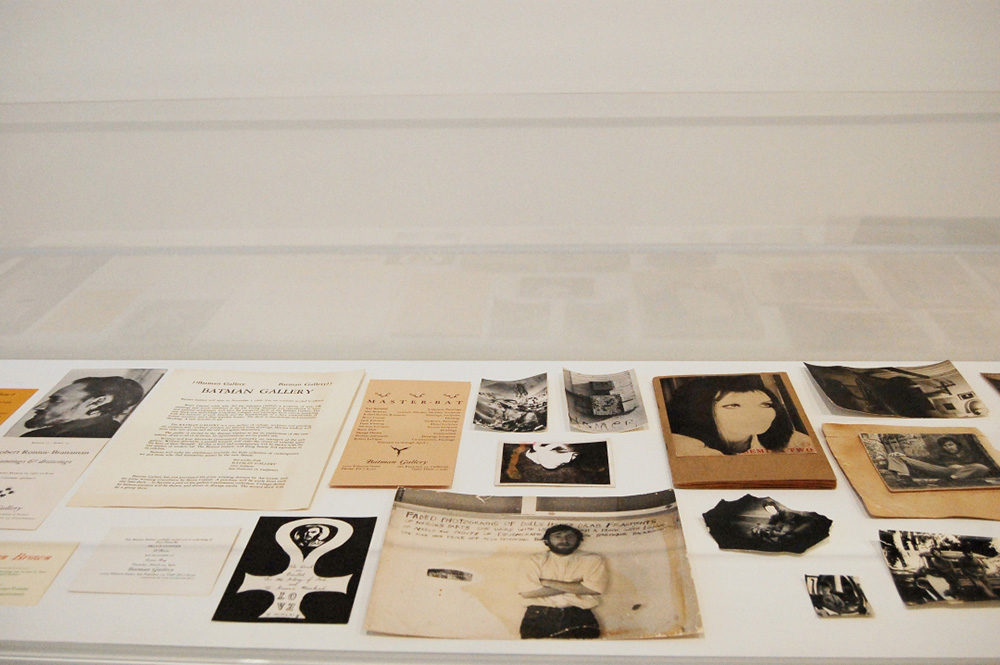
Installation view of “RAT BASTARD PROTECTIVE ASSOCIATION” (2017), Susan Inglett, New York
Aukeman has curated the current exhibition, RAT BASTARD PROTECTIVE ASSOCIATION, at Susan Inglett (April 27 – June 3, 2017), which is its second iteration. The first, which included more artists, was at the Landing (October 1, 2016 – January 7, 2017) in Los Angeles.
The Inglett exhibition features paintings, drawings, works on paper, collages, assemblages, and a vitrine full of ephemera. The artists in the show include Wallace Berman, Bob Branaman, Joan Brown, Bruce Conner, Jean Conner, Jay DeFeo, George Herms, Wally Hedrick and Michael McClure. This gathering is supplemented by a wall of black-and-white digital archival prints of the artists and others from the scene taken by Jerry Burchard. Burchard is to the San Francisco scene what Fred W. McDarrah was to New York’s downtown milieu: an essential figure who has beautifully documented a bygone era.
The works in the show date from 1952, when Jay DeFeo is in Europe, to 1967, when Conner made “SUPER CONNER CAMPAIGN SOAPBOX” (1967) by adhering offset self-adhesive stickers sporting the artist’s name to a low platform or “soapbox.” Conner used this sticker-covered platform to deliver speeches when he was running for San Francisco’s City Supervisor in 1967. When Robert Rauschenberg famously said that he worked in “that gap between art and life,” he suggested that the two were separate domains. Conner’s soapbox proposes that there is no gap, and art and life are connected.
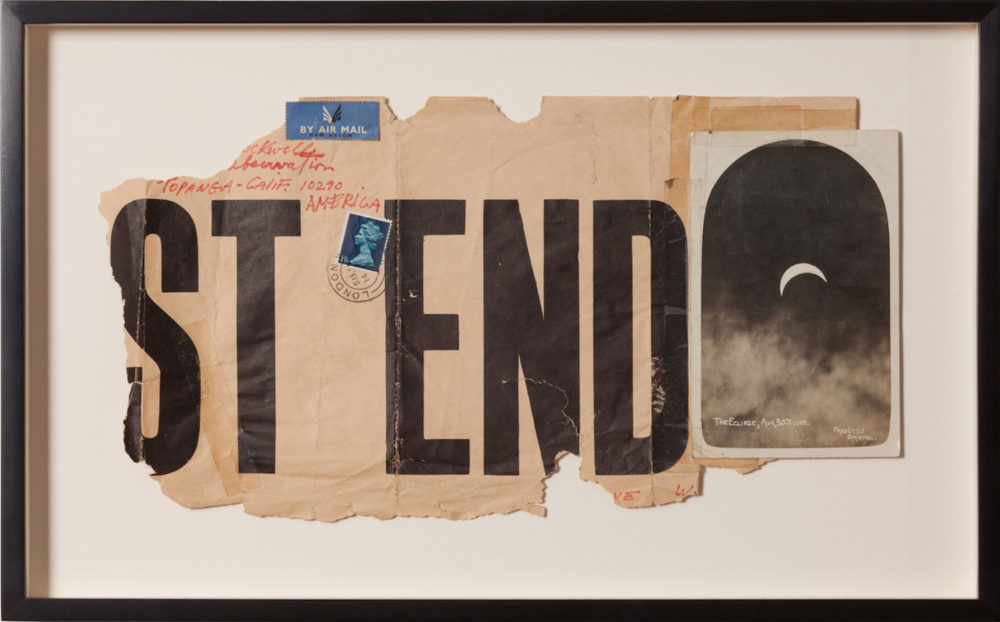
Wallace Berman, “Collaged mailer” (c. 1966), collage on paper, 8 x 13 inches
There is a group of collaged mailers that Berman used to send various friends copies of his magazine Semina, plus other ephemera well worth looking at. It seems that Berman — like the other artists in this wonderful show — used any and every occasion to make something into art without thinking about posterity or their place in history.
The three artists who were part of this group but not well-known, particularly in New York, are represented by one or two works: Robert “Bob” Branaman, Jean Conner, and Wally Hedrick. While I have seen work by Jean Conner and Hedrick and am always happy to see more, Branaman was new to me.
After I began doing research on him, I found that, like Bruce Conner, McClure, and David Haselwood (who published books under his imprint, Auerhahn Press), Branaman originally hailed from Wichita, Kansas. In 1959, he moved to San Francisco, where he hooked up with McClure, Conner, and others in this nascent scene. A poster announcing his show at the Batman Art Gallery is in the vitrine. In addition to making paintings, drawings, prints, and films, he collaborated with Allen Ginsberg and William S. Burroughs. A big show of his work is in order.
Jean Conner has two collages titled “(ARE YOU A SPRINGMAID),” both dated 1960. Using an insipid magazine ad depicting a woman sleeping in a bucolic scene (a sign for comfort and freshness) from the Springmaid bedding company, Conner puns on the company’s name by adding seven young women, wearing colorful pajamas and dresses, who are dancing, jumping, and frolicking above the woman resting comfortably beneath a sheet.
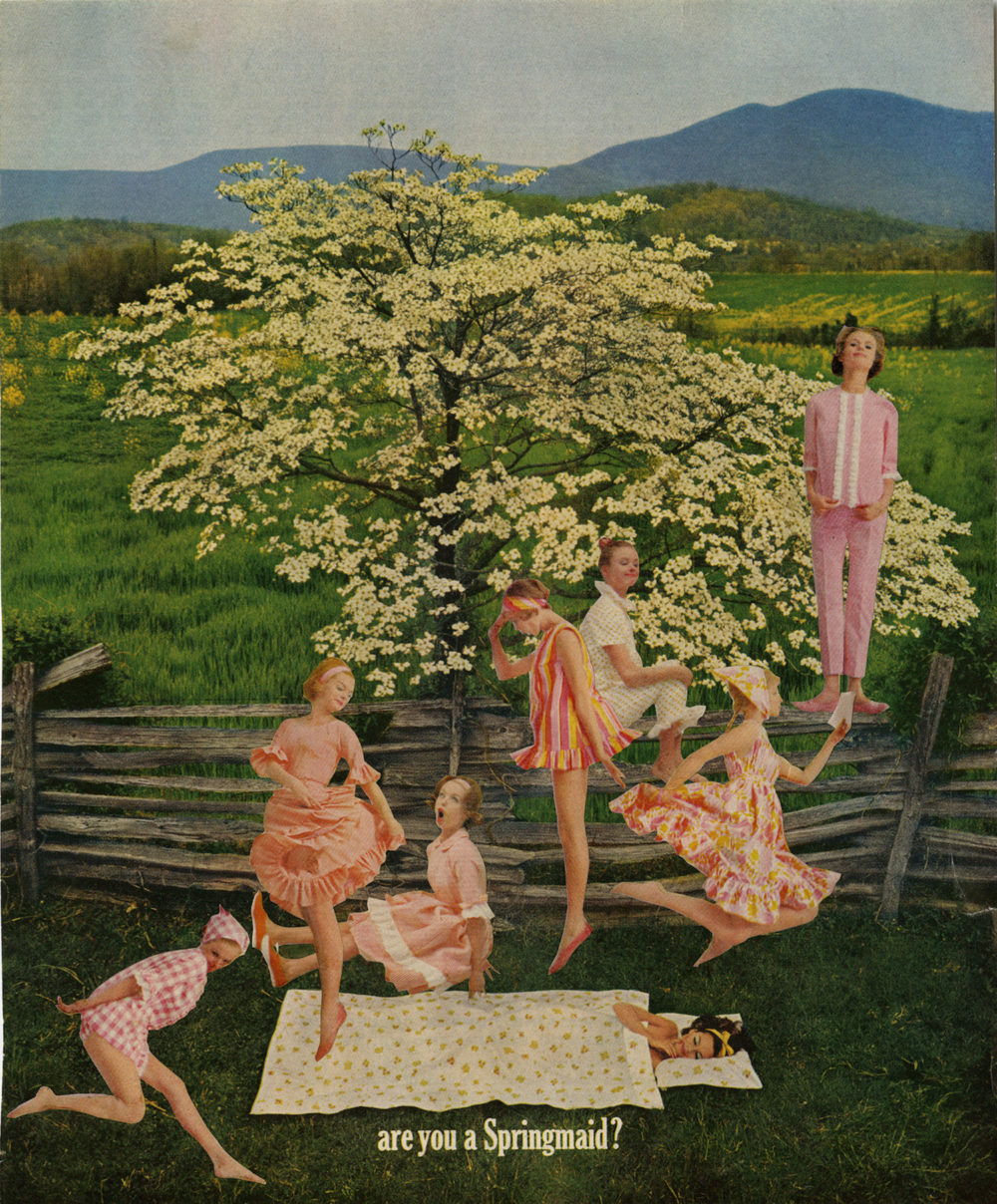
Jean Conner, “(ARE YOU A SPRINGMAID)” (1960), paper collage, 11 7/8 x 9 3/4 inches
The juxtaposition suggests that the sleeping woman is dreaming, since she’s asleep on the ground with no visible Springmaid mattress. The work is delightfully whimsical and, at the same time, pokes fun at the frivolous idealization of women so often found in magazine ads from that time and now. From these and other collages that I have seen over the years, I am curious what a large selection of Conner’s work would look like.
Wally Hedrick has flown under the radar in New York ever since his work (along with DeFeo’s) was selected by the legendary Dorothy Miller for Sixteen Americans at the Museum of Modern Art, New York (December 16, 1959–February 17, 1960). That’s nearly sixty years, a very long time, which is the subject of one of Hedrick’s paintings in the exhibition. Measuring 118 inches high by 25 inches wide, “Hurry Up It’s Time” (1960) is an elongated vertical format in which Hedrick has depicted a gold clock mounted on a gold pedestal topped by a Maltese Cross.
There is something absurd about a painting of these dimensions depicting a clock, where time stands still.
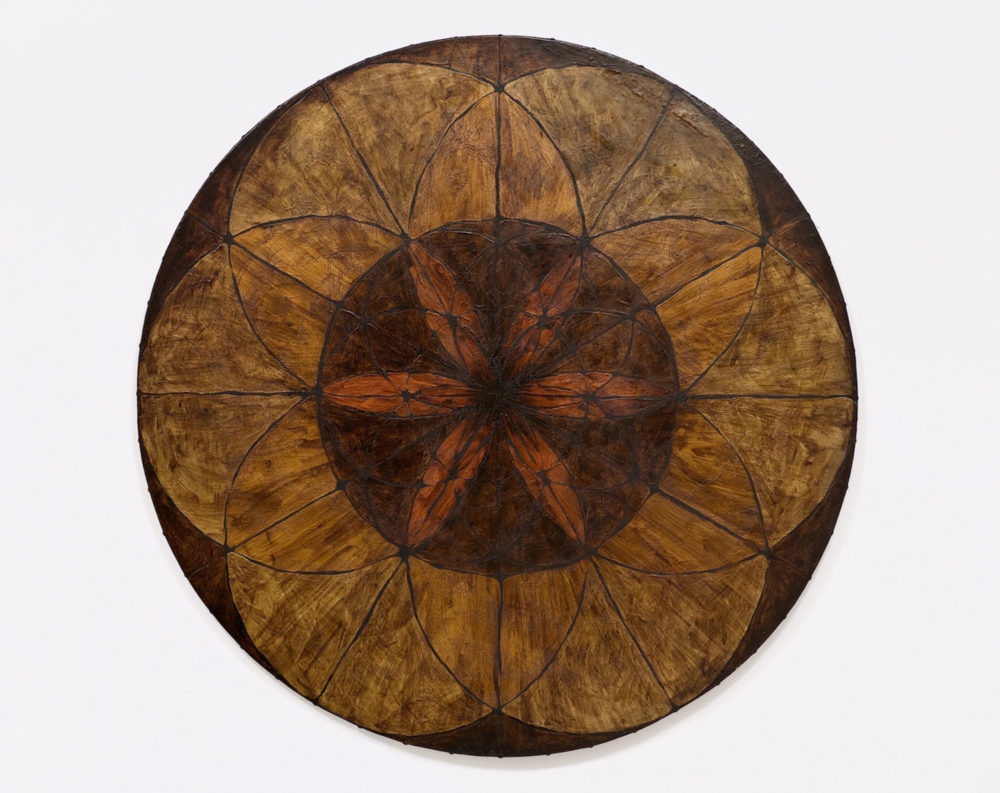
Wally Hedrick, “Love Feel” (1957), oil on canvas, 59 inch diameter
“Love Feel” (1957), Hedrick’s other painting, is a tondo on which the artist has painted an earth-toned mandala. This, of course, is one of the real differences between the artists associated with the Rat Bastard Protective association and their New York counterparts. These West Coasts believed in the occult, magic, and consulted the tarot cards of Aleister Crowley. They did not reject Surrealism, dreams, or the irrational. More interested in feeling than in formal issues, they rebelled against strictures of every kind, while many of their New York counterparts embraced a rigid geometry.
RAT BASTARD PROTECTIVE ASSOCIATION continues at Susan Inglett (522 West 24th Street, Chelsea, Manhattan) through June 3.

